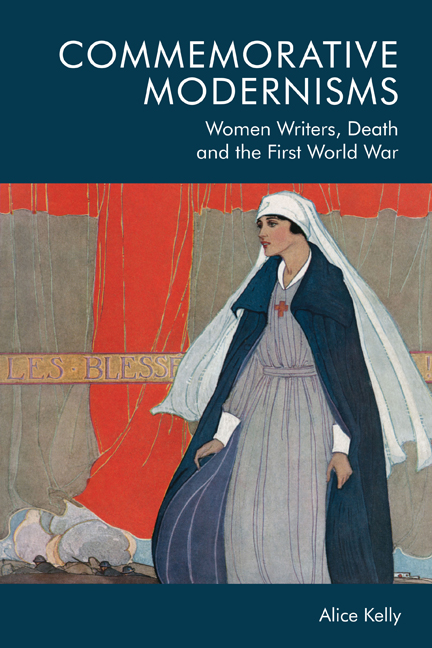Book contents
- Frontmatter
- Contents
- List of Figures
- Acknowledgements
- Dedication
- Introduction: A Culture Surcharged with Death
- Part One Death in Proximity: Wartime Commemorations
- Part Two Grief at a Distance: Civilian Modernisms
- Part Three Modernist Death: Postwar Remembrance
- Conclusion: Modernism’s Ghosts
- Bibliography
- Index
Conclusion: Modernism’s Ghosts
Published online by Cambridge University Press: 15 October 2020
- Frontmatter
- Contents
- List of Figures
- Acknowledgements
- Dedication
- Introduction: A Culture Surcharged with Death
- Part One Death in Proximity: Wartime Commemorations
- Part Two Grief at a Distance: Civilian Modernisms
- Part Three Modernist Death: Postwar Remembrance
- Conclusion: Modernism’s Ghosts
- Bibliography
- Index
Summary
The final version of Sir William Orpen's To the Unknown British Soldier in France, presented to the Imperial War Museum in 1928, features the tomb of the Unknown Warrior lying beneath a chandelier in an ornate marble hall in the Palace of Versailles; in the distant background, the silhouette of a cross outlined in a lit arch gives some light to the scene. This was the third of three commemorative paintings that the British official war artist was commissioned to paint of the Peace Conference in July 1919. The first two paintings depict the political leaders in group settings, where Orpen's deliberate composition makes them appear small in relation to their ostentatious surroundings. In the final painting, Orpen planned to depict the Allied leaders and generals, including Earl Haig, David Lloyd George and Ferdinand Foch before they entered the signing chamber, and claimed he had made thirty portraits of the figures before deciding to paint over them. However, as he records in his memoir An Onlooker in France (1921), he was intensely disillusioned with the proceedings of the conference: ‘It was all over. The “frocks” had won the war. The “frocks” had signed the Peace! The Army was forgotten. Some dead and forgotten, others maimed and forgotten, others alive and well – but equally forgotten.’ Instead, he painted out the political figures and included instead two soldiers guarding the coffin with bayonets, with only their loins concealed on their skeletal frames, with two cherubs floating above the soldiers. Orpen's cynicism is evident: ‘after all the negotiations and discussions, the Armistice and Peace, the only tangible result is the ragged unemployed soldier and the Dead’ (see Fig. C.1).
Orpen's key gesture was to return the mass dead, through the new memorial of the Unknown Warrior, and the surviving veterans, to the heart of the Peace Conference. He had drawn the model for the soldiers in an earlier painting, Blown Up. Mad. (1917), which depicts the impact of a shell explosion that Orpen witnessed: a soldier who has lost his clothes and mind, wearing rags, his puttees unravelling, one of his shoes blown open. The second version of To the Unknown Soldier in France, completed in 1921, was first exhibited at the Royal Academy Summer Exhibition in 1923, where it caused both controversy and acclaim.
Information
- Type
- Chapter
- Information
- Commemorative ModernismsWomen Writers, Death and the First World War, pp. 230 - 243Publisher: Edinburgh University PressPrint publication year: 2020
